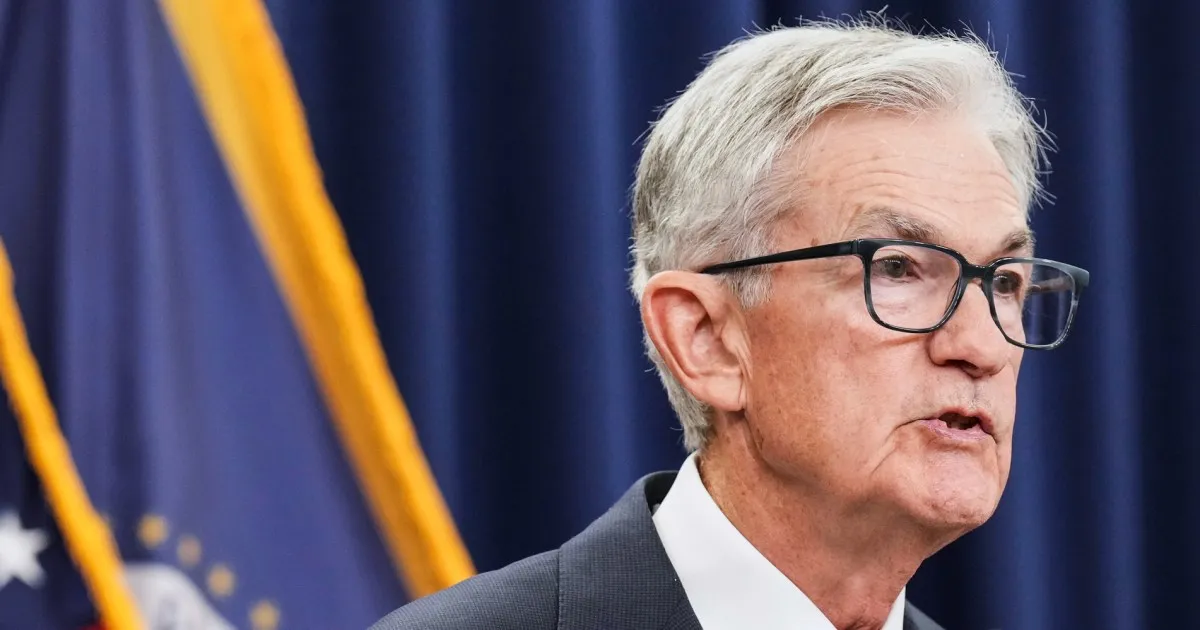
Investors are almost universally anticipating that the Federal Reserve will announce a quarter-point cut to its benchmark interest rate this Wednesday afternoon. However, what unfolds next remains uncertain. Traditionally, during periods of labor market slowdown, the Fed reduces rates to stimulate economic activity. Conversely, during times of rising inflation, the Fed typically increases rates to curb escalating prices. Currently, the Fed finds itself in a challenging position, as data indicates both a weakening employment landscape and persistent price growth.
As Fed Chair Jerome Powell stated earlier this month, “There is no risk-free path for policy as we navigate the tension between our employment and inflation goals.” These remarks echo similar sentiments he expressed during the Fed's first rate cut of the year in September. Recently, the Bureau of Labor Statistics revealed that the annual inflation rate for consumer prices rose from 2.9% to 3% in September, surpassing the Fed's target of 2%.
The Fed's assessment of the economy is further complicated by a lack of comprehensive data, hampered significantly by the ongoing government shutdown. One critical measure, the personal consumption expenditures index (PCE), which is the Fed's preferred inflation gauge, has also indicated inflation levels above the 2% target. Many economists point to the impact of President Donald Trump’s tariffs as a significant contributor to ongoing price pressures. Luke Tilley, chief economist at Wilmington Trust, remarked, “The tariffs are the biggest tax increase since the late 1960s.”
In parallel, the job market data paints a picture of one of the weakest labor markets in the 21st century. The unemployment rate, recorded at 4.3% as of August, appears low historically; however, it is taking individuals nearly six months on average to secure a new job. This sluggish hiring pace resembles conditions seen in the aftermath of the 2008 global financial crisis.
The ongoing government shutdown, which is nearing its fourth week, has further complicated the situation by halting the release of timely economic data by the Bureau of Labor Statistics. In the absence of new figures, economists from BNP Paribas noted that “the Fed’s task is further complicated.” With limited private-sector data available, there is no adequate substitute for the official statistics. For instance, payroll processor ADP's employment survey highlighted a significant drop in private employment during August and September, yet this data only accounts for about 20% of the private labor force, excluding federal, state, or local government employment.
Despite the challenges in the labor market, economic growth appears to be robust, driven largely by investments in artificial intelligence. Estimates for gross domestic product (GDP), the standard measure of economic growth, have surged to nearly 4%. Additionally, major stock market indexes continue to reach new heights, largely attributed to AI investments, raising concerns about a potential market bubble.
The anticipation that the Fed will lower interest rates further has historically supported stock prices. Fed governor Christopher Waller remarked on October 16, “Something’s gotta give.” Waller, a nominee from Trump who is in contention to succeed Powell as chair, emphasized the need to balance economic growth with labor market realities. “Either economic growth softens to match a soft labor market, or the labor market rebounds to match stronger economic growth,” he added.
However, even Waller, who previously urged the Fed to cut rates as quickly as possible, called for caution: “We need to move with care when adjusting the policy rate to ensure we don’t make a mistake that will be costly to correct.” Some analysts suggest that the tension between high inflation and declining labor statistics may be easing, albeit for reasons that could negatively impact the broader economy. Neil Dutta, head of economics at Renaissance Macro, indicated that as job growth falters, price pressures may also diminish as households become more cautious about spending.
Given these complexities, the Fed is expected to make its next interest rate decision on December 10, as the economic landscape continues to shift and evolve.